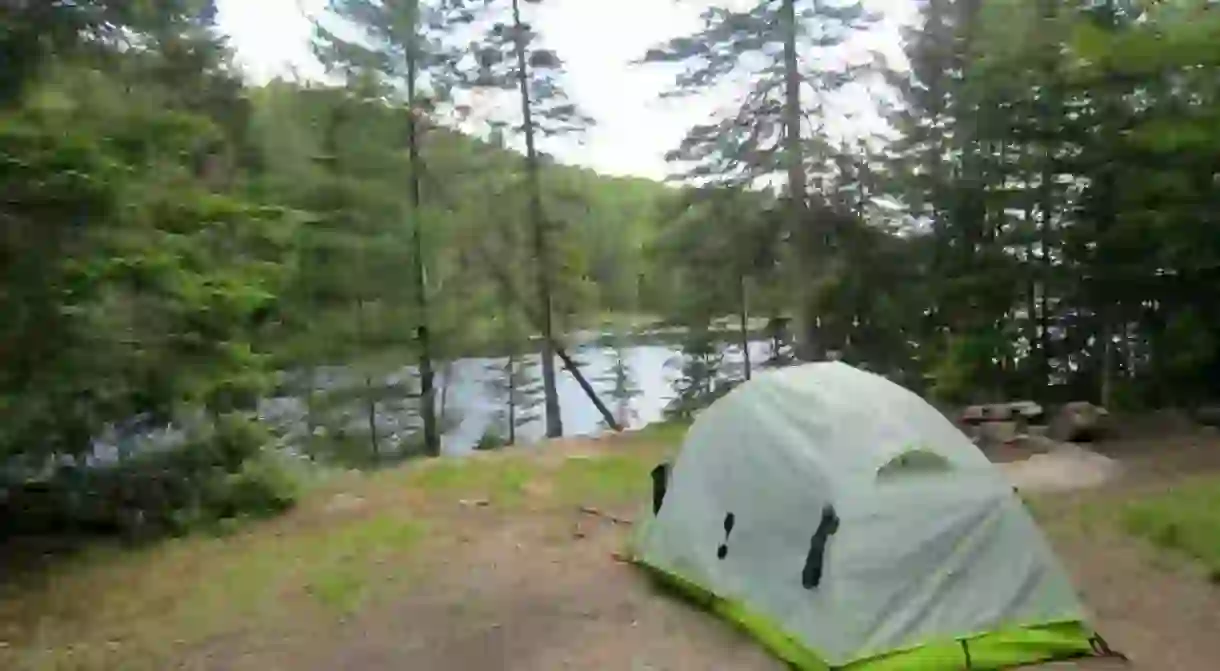A Quick Guide to Algonquin Provincial Park

Founded in 1893, Algonquin Provincial Park, a bucket list travel destination for visitors from all over the world, was Ontario’s first provincial park. Located between Georgian Bay and the Ottawa River in Ontario, Algonquin is home to over 1,500 inland lakes and 14 hiking trails. While it is indeed a nature lover’s paradise, exhibits and interactive displays in the on-site Visitor Centre, Logging Museum, and Art Centre bring to life the human and natural history of the park. As one of the crown jewels of the province, a trip through south-central Ontario wouldn’t be complete without a visit to Algonquin.
Background
Located in south-central Ontario, Algonquin Provincial Park is a 300-kilometer (186.4-mile) drive from Toronto. Recognized as Ontario’s largest park and nationally renowned for its diverse cultural, historical, and ecological background, Algonquin is a mecca for nature lovers with its endless rocky ridges, vast wilderness, and numerous freshwater lakes. While the Highway 60 corridor of the park is the most frequently visited, campgrounds and hiking trails do span the north and southeastern areas as well. Algonquin was named a National Historic Site in 1992 and inspires close to 1,000,000 visitors annually.

What to see and do
Algonquin is Ontario’s heartland for all-season recreation. From canoeing through the remote wilderness in summer to mushing through one of the parks dogsled trails in winter, there are countless opportunities to take advantage of year-round. Noteworthy day-use trails with jaw-dropping lookouts in the southwestern section of the park include the Track and Tower, Centennial Ridges, and Booth’s Rock. If you find yourself in Algonquin Park’s eastern side, be sure to venture on the Barron Canyon Trail as it offers spectacular views of the 100-meter-deep (328 feet) canyon from an unfenced cliff.
For those interested in an extended trip, there are over 1,900 campsites located in the park’s rugged interior, accessible only by foot or canoe. Algonquin’s backcountry landscape has long since inspired many artists, including Tom Thomson and members of the Group of Seven, who captured the raw beauty of the surrounding wilderness. The Algonquin Art Centre, located at kilometer 20 on Highway 60, has several nature-inspired paintings and sculptures for viewing.

Where to stay
Beyond backcountry campsites, lodging in Algonquin also includes 11 campgrounds, several of which are equipped with plug-ins for RVs. Roofed yet rugged accommodation can be found in or close to campgrounds and include several ranger cabins and eight yurts. Many sites can be viewed and reserved online. Additionally, there are two lodges in the park, Bartlett and most notably, Killarney. Both offer spacious cabins and fine dining.
There are also numerous lodges and resorts surrounding the park, including the Blue Spruce Resort in Dwight and the Bellwood Inn in Whitney. For those interested in budget-friendly accommodation, the Algonquin Dream Catcher Motel is located in Whitney, making it one of the closest hotels to the park along the Highway 60 corridor.

Where to eat
Aside from countless picnic areas, dining options also exist within the park. These include the Lake of Two Rivers Café, the Bartlett Lodge Restaurant, and the Killarney Lodge Restaurant. You can also pick up a quick snack at the Visitor Centre or Portage Store. For those interested in a larger variety, there are several restaurants and diners in the surrounding towns, including Whitney and Huntsville.














